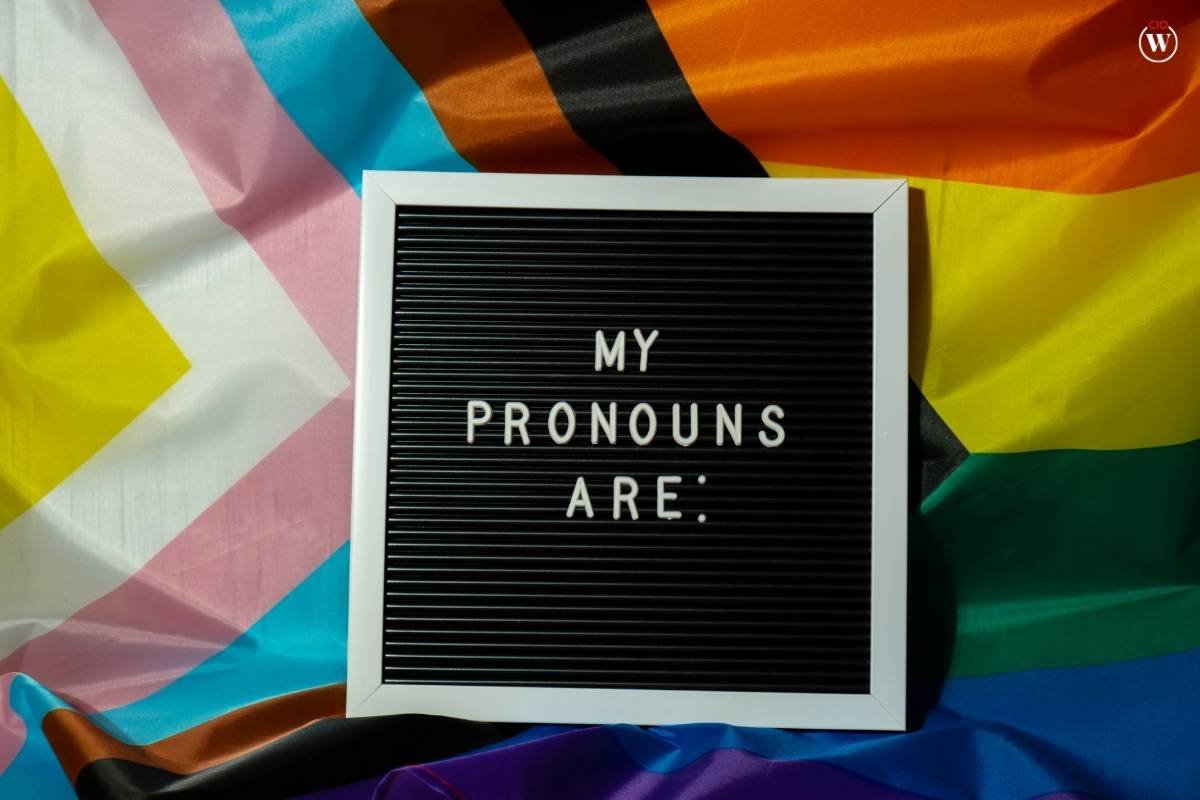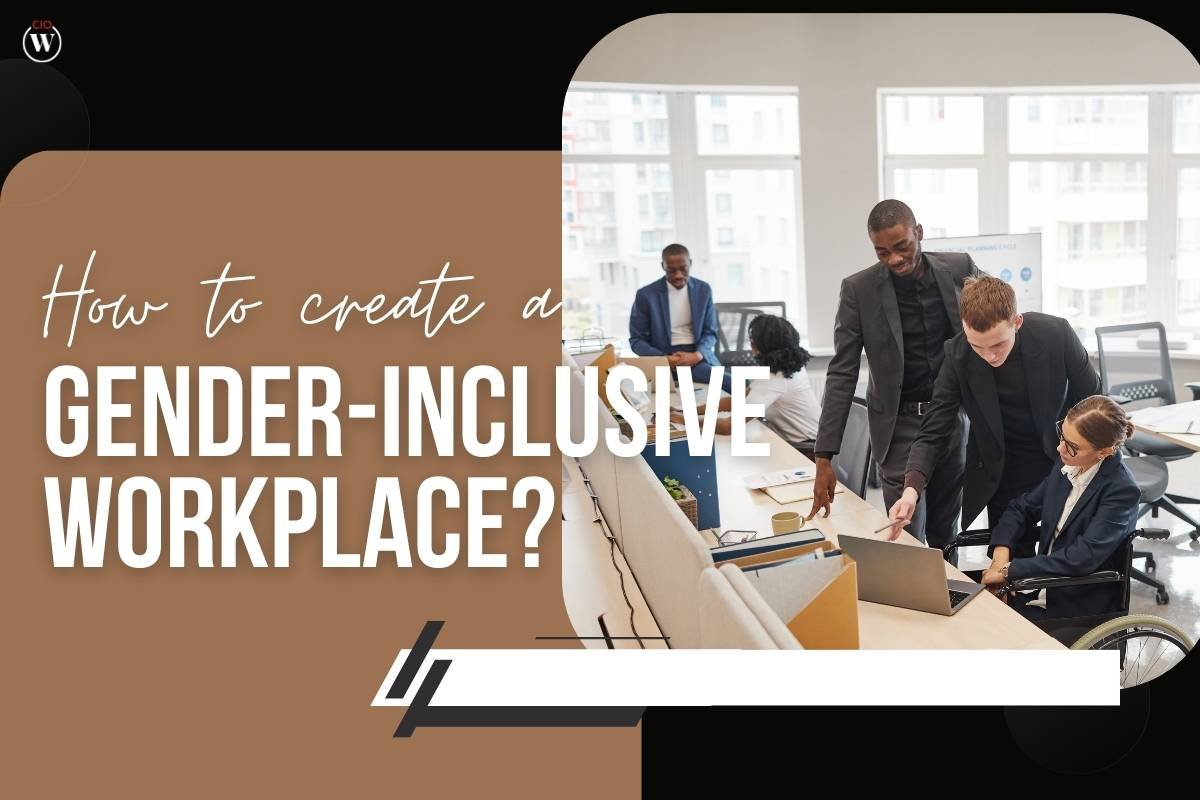In today’s rapidly evolving world, creating a gender-inclusive workplace is not just a moral imperative, but also a strategic advantage. Companies that foster diversity and inclusivity tend to be more innovative, competitive, and ultimately successful. One critical aspect of fostering a gender-inclusive workplace is recognizing the importance of pronouns.
Gender pronouns are a fundamental part of an individual’s identity, and respecting them is a simple yet powerful way to promote inclusivity and respect within your organization. In this article, we will explore why pronouns matter and provide seven strategies to create a gender-inclusive workplace where everyone feels valued and respected.
Strategies for the gender-inclusive workplace:
1. Educate Your Team
Education is the first step towards creating a gender-inclusive workplace. Many people may not fully understand the significance of gender pronouns or may be unaware of the range of pronouns that individuals use to describe their gender identity. Start by providing training and resources to your team to ensure everyone has a clear understanding of why pronouns matter and how to use them appropriately.
Encourage open discussions about gender identity and pronouns to help demystify the topic. Consider bringing in experts or organizations that specialize in LGBTQ+ inclusion and provide workshops or seminars. By educating your team, you empower them to be more respectful and inclusive in their interactions.
2. Normalize Pronoun Usage
To create a gender-inclusive workplace, it’s crucial to normalize the use of gender pronouns. This means incorporating pronoun usage into everyday communications, such as email signatures, introductions, and meetings. Encourage employees to include their pronouns in their email signatures and name tags.

Furthermore, ensure that gender pronouns are incorporated into HR documents, policies, and forms. Make it easy for employees to update their gender identity and pronouns in the company’s systems, and ensure that they have the option to choose from a range of pronouns.
3. Lead by Example
Leaders play a significant role in setting the tone for an inclusive workplace. By leading by example, managers and executives can demonstrate the importance of using gender pronouns respectfully. When leaders consistently use and respect pronouns, it sends a powerful message to the rest of the team.
Leaders should also create a safe space for employees to express their gender identity and pronoun preferences without fear of judgment or discrimination. By fostering an open and inclusive environment, leaders can show that they value and support all employees, regardless of their gender identity.
4. Foster Inclusivity through Language
Language is a powerful tool for creating a gender-inclusive workplace. Encourage the use of gender-neutral language in all company communications. For example, use “they/them” when referring to a hypothetical person instead of “he” or “she.” This small change can make a significant difference in creating a more inclusive environment.
Additionally, avoid making assumptions about an individual’s gender identity based on their appearance or name. It’s important to remember that gender identity is personal and may not always align with societal expectations.
5. Create Inclusive Restrooms and Facilities
Gender-inclusive restrooms and facilities are essential for creating a truly inclusive workplace. By providing accessible and safe spaces for all employees, you show that you value their comfort and safety. Implementing gender-neutral restroom options and making them readily available is a crucial step in fostering inclusivity.

Moreover, ensure that restroom signage and facilities are designed in a way that respects all gender identities. Clear and inclusive signage, as well as privacy measures, can help everyone feel more comfortable and respected.
6. Address and Prevent Discrimination
To create a gender-inclusive workplace, it’s essential to have robust anti-discrimination policies in place. These policies should clearly outline that discrimination or harassment based on gender identity or the use of specific pronouns is not tolerated. Training should be provided to employees, emphasizing the importance of reporting any discriminatory behavior they witness or experience.
Implementing clear reporting procedures and consequences for discriminatory actions is crucial. Ensure that employees feel safe reporting incidents and that they are met with a swift and appropriate response. This sends a strong message that discrimination will not be tolerated in your organization.
7. Celebrate Diversity and Inclusivity
Finally, celebrate diversity and inclusivity within your workplace. Recognize and support events and initiatives that promote inclusivity, such as LGBTQ+ Pride Month. Encourage employees to share their stories and experiences, and make space for individuals to express their gender identity openly.

Create employee resource groups (ERGs) or support networks that focus on gender diversity and inclusion. These groups can provide a sense of community and support for employees who may face unique challenges related to gender identity.
In conclusion, creating a gender-inclusive workplace is not only the right thing to do but also a strategic decision that can lead to a more innovative and successful organization. Pronouns matter because they are a fundamental part of an individual’s identity, and respecting them is a simple yet powerful way to promote inclusivity and respect.
By educating your team, normalizing pronoun usage, leading by example, fostering inclusivity through language, providing inclusive facilities, addressing and preventing discrimination, and celebrating diversity and inclusivity, you can take significant steps toward creating a gender-inclusive workplace where all employees feel valued, respected, and able to bring their whole selves to work.
It’s important to remember that creating a gender-inclusive workplace is an ongoing process that requires commitment and dedication from all levels of the organization. By prioritizing this effort, you can create an environment where everyone can thrive and contribute their best. In doing so, you not only benefit your employees but also position your company for long-term success in an increasingly diverse and inclusive world.









